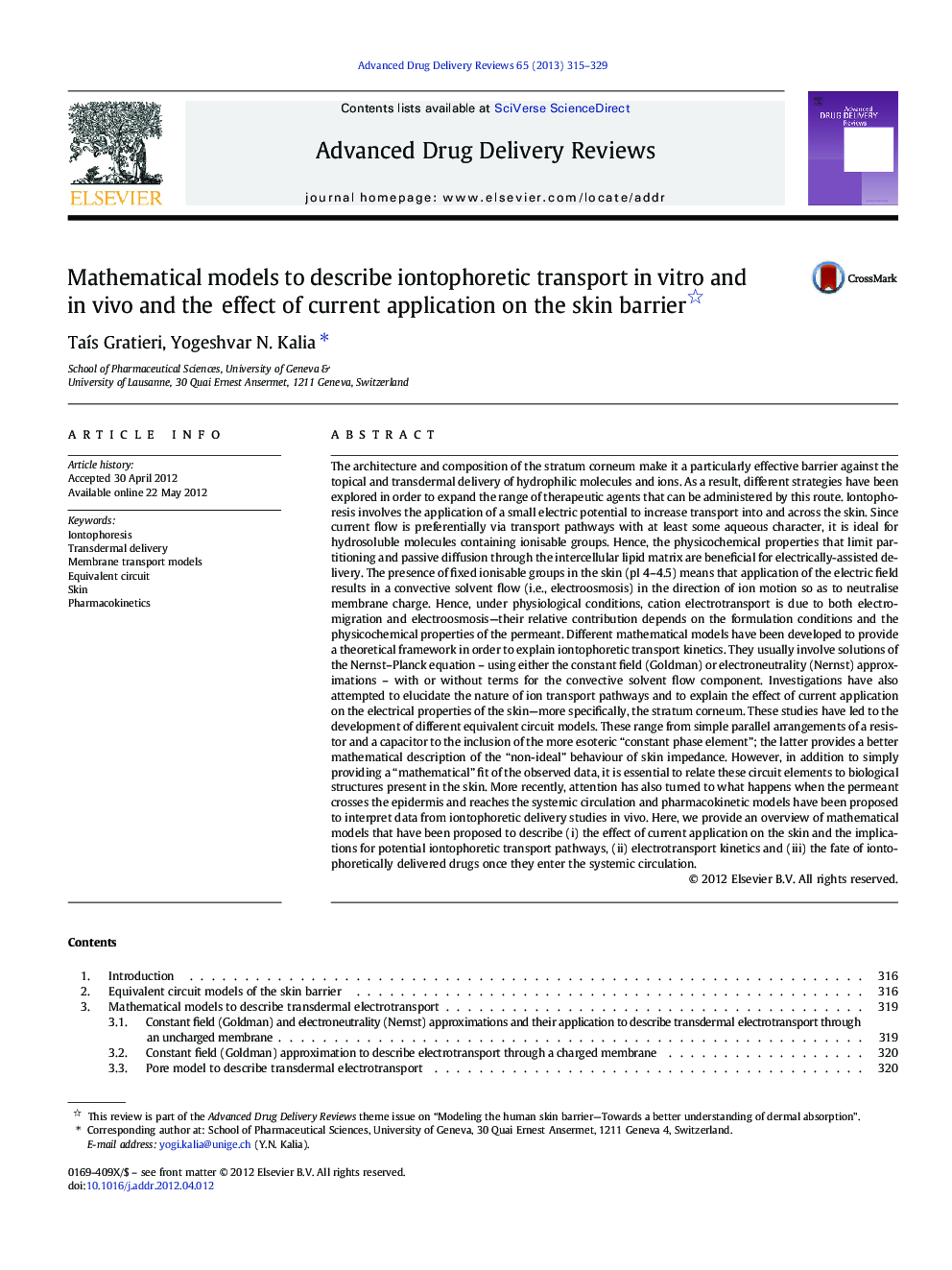| کد مقاله | کد نشریه | سال انتشار | مقاله انگلیسی | نسخه تمام متن |
|---|---|---|---|---|
| 2072142 | 1078860 | 2013 | 15 صفحه PDF | دانلود رایگان |

The architecture and composition of the stratum corneum make it a particularly effective barrier against the topical and transdermal delivery of hydrophilic molecules and ions. As a result, different strategies have been explored in order to expand the range of therapeutic agents that can be administered by this route. Iontophoresis involves the application of a small electric potential to increase transport into and across the skin. Since current flow is preferentially via transport pathways with at least some aqueous character, it is ideal for hydrosoluble molecules containing ionisable groups. Hence, the physicochemical properties that limit partitioning and passive diffusion through the intercellular lipid matrix are beneficial for electrically-assisted delivery. The presence of fixed ionisable groups in the skin (pI 4–4.5) means that application of the electric field results in a convective solvent flow (i.e., electroosmosis) in the direction of ion motion so as to neutralise membrane charge. Hence, under physiological conditions, cation electrotransport is due to both electromigration and electroosmosis—their relative contribution depends on the formulation conditions and the physicochemical properties of the permeant. Different mathematical models have been developed to provide a theoretical framework in order to explain iontophoretic transport kinetics. They usually involve solutions of the Nernst–Planck equation – using either the constant field (Goldman) or electroneutrality (Nernst) approximations – with or without terms for the convective solvent flow component. Investigations have also attempted to elucidate the nature of ion transport pathways and to explain the effect of current application on the electrical properties of the skin—more specifically, the stratum corneum. These studies have led to the development of different equivalent circuit models. These range from simple parallel arrangements of a resistor and a capacitor to the inclusion of the more esoteric “constant phase element”; the latter provides a better mathematical description of the “non-ideal” behaviour of skin impedance. However, in addition to simply providing a “mathematical” fit of the observed data, it is essential to relate these circuit elements to biological structures present in the skin. More recently, attention has also turned to what happens when the permeant crosses the epidermis and reaches the systemic circulation and pharmacokinetic models have been proposed to interpret data from iontophoretic delivery studies in vivo. Here, we provide an overview of mathematical models that have been proposed to describe (i) the effect of current application on the skin and the implications for potential iontophoretic transport pathways, (ii) electrotransport kinetics and (iii) the fate of iontophoretically delivered drugs once they enter the systemic circulation.
Figure optionsDownload high-quality image (223 K)Download as PowerPoint slide
Journal: Advanced Drug Delivery Reviews - Volume 65, Issue 2, February 2013, Pages 315–329